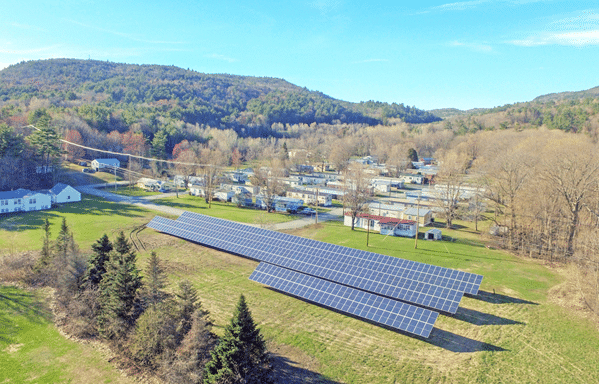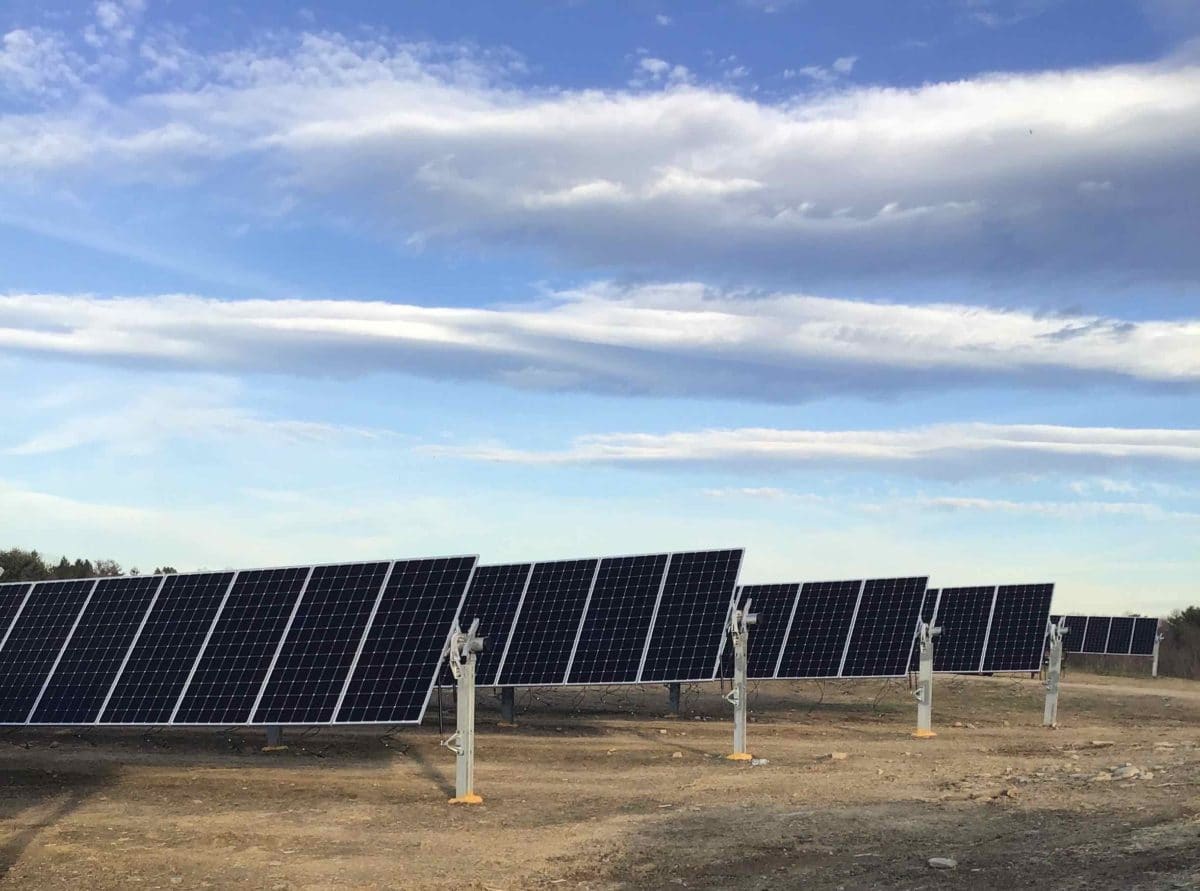At the beginning of September, alongside the launch of the villages of Brockport and Lima’s opt-out community solar programs, National Grid and the New York State Energy Research and Development Authority (NYSERDA) filed a petition with state regulators that requests that National Grid and, eventually, all investor-owned utilities be granted authority to purchase and distribute a significant portion, if not all, of the state’s expected community solar resources.
Among a few other changes, the proposal looks to shift the program’s ownership model so that utilities own the community solar installations, rather than the communities served by the installation owning them. The proposal would place municipal leaders in direct competition with utilities, requiring them to file applications and justify to utilities the benefit of access to community solar. Municipal leaders would need to argue for their own low-to-moderate income residents, even when projects are located on their municipal land.

The proposal has caught the attention of residents and activists alike in New York, specifically drawing the ire of leadership at Joule Community Power, the community choice program developer. The company has argued that, not only does this partially devalue the community aspect of the program, but it could also restrict the ability for municipal leaders to dedicate savings from solar projects to their own residents and communities.
To better understand what National Grid and NYSERDA intend to accomplish with the proposal, pv magazine sat down with Jessica Stromback, CEO of Joule Assets Inc.
A problem already solved
“In our view, the petition is looking to solve a problem that, in fact, the market has already solved…” said Stromback. “The main focus there is to make sure that low to moderate income residents receive access to solar, in a good way, and that, of course, everybody absolutely supports.”
NYSERDA has already incorporated adders into the program which enable solar developers to access and work with low- and middle-income customers. In addition, firms and companies have worked with municipalities to ensure that the programs reach all customers equitably.
For one reason or another, NYSERDA hasn’t been able to recognize these impacts, resulting in the filing of a petition to solve a problem that doesn’t exist.

Image: ReVision Energy
The petition also looks to lower customer acquisition costs for the program, however this is another aspect that Stromback attests is a non-issue.
According to data provided by Joule, in National Grid’s service area, total project costs – excluding construction – as represented by customer acquisition plus annual maintenance plus credit payments to subscribers have been reduced by more than 35% over the last 18 months. Customer acquisition costs were 22% of the total cost. These have been reduced by 65%, and they now make up roughly 12% of total project costs.
Statewide, total project costs, determined by the same metrics as above, have been reduced by roughly 26%. Customer acquisition costs were 18% of the total cost. These have been reduced by 65%. They now make up a shade under 9.5% of total project costs.
The same thing holds true when it comes to customer management costs, which have been cut in half in the last few months. Customer acquisition costs are coming down a bit more rapidly than customer maintenance costs, however Stromback expects that that maintenance costs will be cut in half again.
“They were looking at also solving the cost,” said Stromback. “But those costs have already gone down really significantly.”
The big deal
According to Stromback, the negative effects created by the National Grid/NYSERDA proposal would be threefold:
- Removal of the community aspect of community solar as one entity runs its entire service area
- A stagnation of a once robust and thriving market
- Long auction and award timelines, creating a development “black hole”
The first point is actually similar to a phenomenon we’ve seen play out in Virginia, where residents have come out in droves to protest the construction of solar projects, not always community solar, because they feel that a corporation is encroaching on their community without their consent.
In New York, however, smaller developers have taken the time to connect with the communities that will foster and benefit from their projects, which has gone a long way in promoting goodwill toward future projects.
Another benefit that these smaller developers have brought with is a vibrant, competitive project market. Such a market forces developers to come up with optimal projects that serve their communities best. According to Stromback, without this competition, there’s no incentive to provide the best project for the best benefit.
“If you take that away, by making it much more centralized at market, you remove that impetus, you just take away that driving force,” she said.
Independent of the petition, auction times for projects have historically lagged, and changing their ownership will do little to remedy this issue.
So the auction process itself takes months,” explained Stromback. “And that’s after the contract is negotiated. So when you have a really powerful player coming in for what is looking like almost all of the accessible market for residential solar… you’re looking at just a black hole of time, when nothing’s getting built, nothing’s getting contracted. And no one else is able to contract either because it’s just a block in the market.”

The stagnation of the community solar market is bad from a perspective of market health, but it’s not just the market that will suffer. The proliferation of community solar projects in New York have become a critical pillar towards achieving the statewide goal of 70% renewable energy by 2030. With community solar demand going from highest in the nation to potentially nothing, it’ll become a lot harder to hit those goals.
The stagnation of the market will also hurt low- and middle-income New York residents, who not only gain access to what has historically been a financially restrictive form of energy, but are set to see electricity bills reduced by up to 10%.
Low- and middle-income people and families have always been the ones most affected by the adverse effects of unclean energy and the least able to access the benefits of clean energy. According to Stromback, stagnating the market will only serve to deepen this historic inequity.
Fighting back
The proposal has not gone unnoticed by groups and individuals, and Stromback shares that 274 comments were submitted to state regulators either outright rejecting the measure, or only supporting it with heavy redesigns and changes.
“Overall, there’s been a lot of concern in the market about the petition,” she said. “And I think what’s very compelling is that you have everyone from the Coalition for Community Solar cells to New Yorkers For Clean Power that are doing it. Then we had 28 municipalities that wrote in, and social justice groups, environmental groups that were writing in concern. So I think the concern has been really strong.”
This content is protected by copyright and may not be reused. If you want to cooperate with us and would like to reuse some of our content, please contact: editors@pv-magazine.com.









By submitting this form you agree to pv magazine using your data for the purposes of publishing your comment.
Your personal data will only be disclosed or otherwise transmitted to third parties for the purposes of spam filtering or if this is necessary for technical maintenance of the website. Any other transfer to third parties will not take place unless this is justified on the basis of applicable data protection regulations or if pv magazine is legally obliged to do so.
You may revoke this consent at any time with effect for the future, in which case your personal data will be deleted immediately. Otherwise, your data will be deleted if pv magazine has processed your request or the purpose of data storage is fulfilled.
Further information on data privacy can be found in our Data Protection Policy.